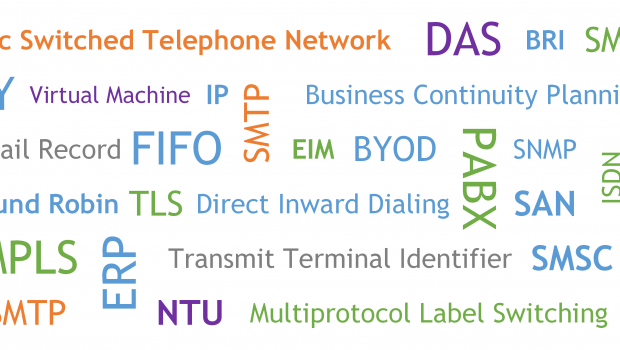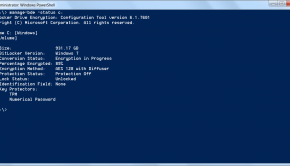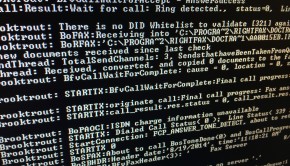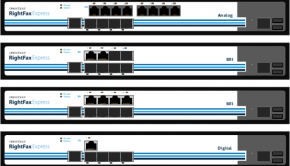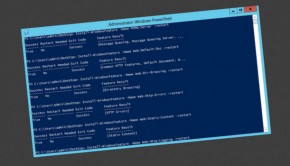Glossary of Terms & Acronyms
The following is a list of terms, phrases and acronyms that I come across on a daily basis. A little list to help friends, partners and colleagues decypher what I am taking about.
Last Update: Tuesday 6th August 2013
- BCP – see Business Continuity Plan
- Business continuity planning (BCP) – identifies an organization’s exposure to internal and external threats and synthesizes hard and soft assets to provide effective prevention and recovery for the organization, while maintaining competitive advantage and value system integrity
- Calling Line Identification – Also called Caller ID, calling line identification (CLID), calling number delivery (CND), calling number identification (CNID) or calling line identification presentation (CLIP), is a telephone service, available in analog and digital phone systems and most voice over Internet Protocol (VoIP) applications, that transmits a caller’s number to the called party’s telephone equipment during the ringing signal, or when the call is being set up but before the call is answered.
- CDR – see Call Detail Record
- Call Detail Record (CDR) – a record of a (billing) event produced by a telecommunication network element
- Central Processing Unit (CPU) – also referred to as a central processor unit, is the hardware within a computer that carries out the instructions of a computer program by performing the basic arithmetical, logical, and input/output operations of the system
- CLI – see Command-line interface or Calling Line Identification
- Command-line Interface – a means of interacting with a computer program where the user (or client) issues commands to the program in the form of successive lines of text (command lines).
- CPU – see Central Processing Unit
- DDI – see Direct Inward Dialing
- DID – see Direct Inward Dialing
- Direct Inward Dialing (DID), also called direct dial-in (DDI) in Europe and Oceania, is a feature offered by telephone companies for use with their customers’ private branch exchange (PBX) systems. In DID service the telephone company provides one or more trunk lines to the customer for connection to the customer’s PBX and allocates a range of telephone numbers to this line (or group of lines) and forwards all calls to such numbers via the trunk. As calls are presented to the PBX, the dialed destination number (DNIS) is transmitted, usually partially (e.g., last four digits), so that the PBX can route the call directly to the desired telephone extension within the organization without the need for an operator or attendant. The service allows direct inward call routing to each extension while maintaining only a limited number of subscriber lines to satisfy the average concurrent usage of the customer.
- DR – see Disaster Recovery
- Disaster Recovery – is the process, policies and procedures that are related to preparing for recovery or continuation of technology infrastructure which are vital to an organization after a natural or human-induced disaster. Disaster recovery is a subset of business continuity. While business continuity involves planning for keeping all aspects of a business functioning in the midst of disruptive events, disaster recovery focuses on the IT or technology systems that support business functions.
- ECM – see Enterprise Content Management or Error Correction Mode
- Enterprise content management (ECM) is a formalized means of organizing and storing an organization’s documents, and other content, that relate to the organization’s processes. The term encompasses strategies, methods, and tools used throughout the lifecycle of the content
- Error correction mode (ECM) is an optional transmission mode built into Class 1/2/2.0 fax machines or fax modems. ECM automatically detects and corrects errors in the fax transmission process that are sometimes caused by telephone line noise. The page data is divided into what is known as Octets (small blocks of data). Once the receiver has received all the Octets it examines them (using check-sums) and then advises the transmitting fax of any Octets that are in error. The transmitter then need only resend the blocks in error rather than the whole page. This generally means an ECM coded fax will be more likely to succeed on a noisy line. ECM is the norm rather than the exception. Some fax machines have the capability to enable or disable this function.
- HA – see High Availabilty
- High Availability – is a system design approach and associated service implementation that ensures a prearranged level of operational performance will be met during a contractual measurement period.
- NTU – see Network Termination Unit
- Network Termination Unit (NTU) is a device that serves as the demarcation point between the carrier’s local loop and the customer’s premises wiring.
- MPLS – see Multiprotocol Label Switching
- Multiprotocol Label Switching (MPLS) – a mechanism in high-performance telecommunications networks that directs data from one network node to the next based on short path labels rather than long network addresses, avoiding complex lookups in a routing table. The labels identify virtual links (paths) between distant nodes rather than endpoints. MPLS can encapsulate packets of various network protocols. MPLS supports a range of access technologies, including T1/E1, ATM, Frame Relay, and DSL.
- PSTN – see Public Switched Telephone Network
- Public Switched Telephone Network – is the network of the world’s public circuit-switched telephone networks. It consists of telephone lines, fiber optic cables, microwave transmission links, cellular networks, communications satellites, and undersea telephone cables, all inter-connected by switching centers, thus allowing any telephone in the world to communicate with any other. Originally a network of fixed-line analog telephone systems, the PSTN is now almost entirely digital in its core and includes mobile as well as fixed telephones.
- SMSC – A short message service center (SMSC) is a network element in the mobile telephone network. Its purpose is to store, forward, convert and deliver SMS messages.
- SMPP – The Short Message Peer-to-Peer (SMPP) in telecommunications is an open, industry standard protocol designed to provide a flexible data communication interface for the transfer of short message data between External Short Messaging Entities (ESME), Routing Entities (RE) and Message Centres.
- T.30 – Is an ITU recommendation that describes procedures for sending faxes over the PSTN (via modem tones). These include: call establishment and call release; compatibility checking, status and control command; checking and supervision of line conditions; control functions and facsimile operator recall. If you would like to read the spec you can download it here.
- T.38 – Is a protocol that describes how to relay T.30 fax messages over a VoIP network. The relaying of fax is done hop by hop through the data network between VoIP gateway devices. The end fax devices are not aware that this relay process is happening (unless it’s a fax gateway that directly supports T.38), and it uses T.30 protocol directly with the Gateway that is closest to it. The gateway terminates the T.30 protocol and converts the stream into a packetised byte stream that it relays to the next hop gateway over an IP network. The Gateway on the other side receiving the T.38 stream will then convert the messaging back into T.30 protocol and pass it to the end fax machine.
- Transmit Terminal Identifier (TTI) – Identifies the sender of the document. It is the information such as company name or fax number located at the top of each page.
- TTI – see Transmit Terminal Identifier
- V.34 – (and other V.x protocols) – The V protocols describe the modulation and demodulation (modem) techniques used to pass data (in our case, fax) over a phone line.
- VM – see Virtual Machine
- Virtual Machine (VM) – Machines, such as workstations and servers, that run in a virtualized environment. Virtual Machines share the resources of physical machines, such as processing and memory, among multiple virtual machines, which helps to reduce costs associated with over provisioning.

